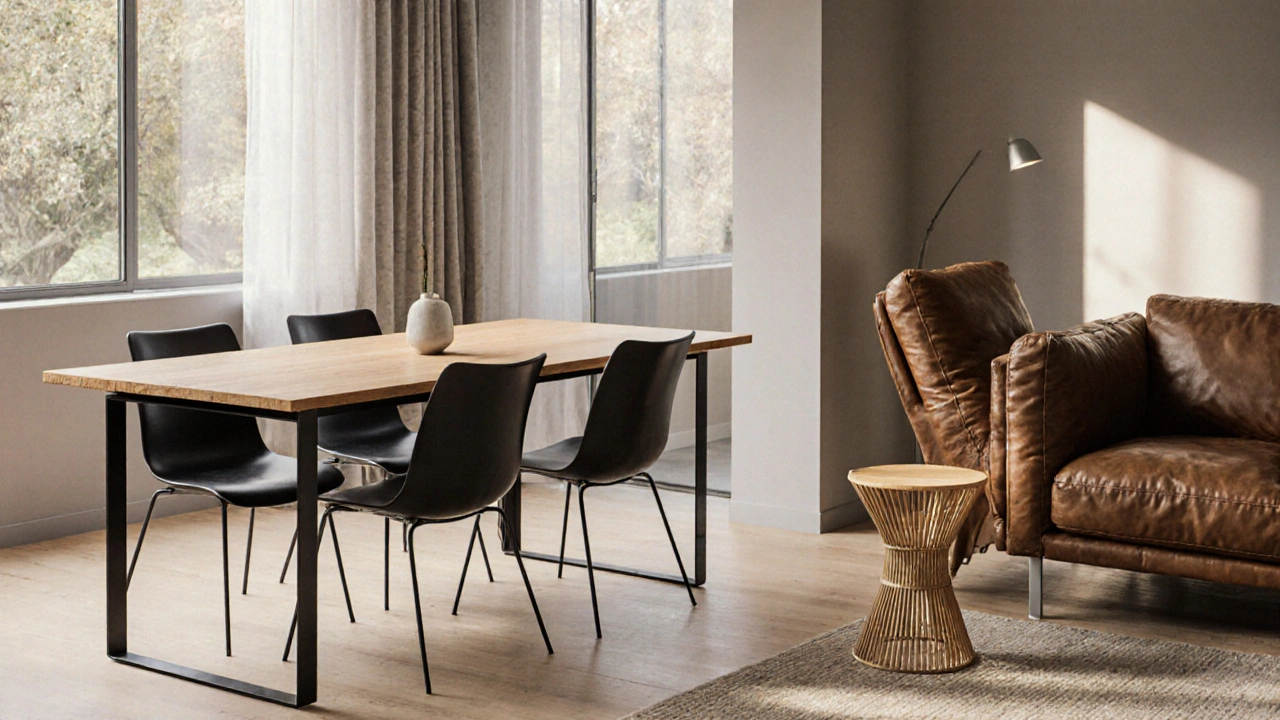Durable Furniture Materials – What Really Stands Up to Time
When choosing durable furniture materials, the substances that keep tables, chairs and sofas from wearing out quickly, you’re actually deciding how long your investment will last and how it will look years down the line. Also known as long‑lasting home furnishings, these materials range from classic solid wood, hard, dense timber such as oak or maple that resists dents and scratches to modern metal frames, steel or aluminum skeletons that offer strength without bulk. Understanding what each option brings to the table helps you avoid costly replacements and keep your space looking fresh.
Key Factors for Choosing Long‑Lasting Materials
First, think about density and hardness. Solid wood scores high on both, especially species like hickory or walnut, which can take knocks and still hold shape. A good finish—oil, varnish, or polyurethane—seals the surface, repels moisture, and reduces wear. Metal frames, on the other hand, win on tensile strength; a properly powder‑coated steel leg won’t bend under everyday use, and aluminum offers rust resistance for humid climates. The trade‑off is usually weight and cost, but when you match the frame to the piece’s purpose, you get a balanced result.
Second, consider environmental impact. Sustainable options such as bamboo, reclaimed oak, or recycled‑plastic composites are gaining traction. Bamboo grows fast, has a high Janka hardness rating, and can be engineered into panels that rival traditional wood. Reclaimed wood brings character and reduces demand for fresh lumber, while recycled plastics create lightweight, moisture‑proof surfaces ideal for outdoor furniture. These materials don’t just last; they also lower your carbon footprint, a factor increasingly important to homeowners.
Third, don’t overlook upholstery fabrics. Leather ages beautifully, developing a patina that many consider a sign of quality. However, it can crack without proper conditioning. Performance fabrics—microfiber, polyester blends, or solution‑dyed acrylic—offer stain resistance and UV stability, making them perfect for high‑traffic living rooms or families with kids. The fabric’s weave, thread count, and backing all influence how well it holds up to daily use, so treat upholstery as an integral part of durability, not just an afterthought.
Finally, think about maintenance. Materials that tolerate simple cleaning routines—wipe‑down steel, spot‑cleaned fabrics, or periodic oiling of wood—save time and money. Compatibility with common household products matters; harsh chemicals can strip finishes or weaken composites. When you choose a material that fits your cleaning habits, you extend its life without needing specialist care.
The articles below dive deeper into these topics. You’ll find a realistic guide on budgeting a kitchen remodel, a look at whether Ethan Allen truly delivers high‑end quality, tips for making a sofa look luxurious, and a breakdown of the biggest expense in a kitchen renovation. Together they show how material choices affect cost, style, and longevity across different rooms and projects. Keep reading to see practical advice, real‑world examples, and quick hacks that let you pick the right durable furniture materials for any space.

Long‑lasting Furniture: Materials, Tips, and Best Picks
Discover which furniture materials last the longest, how construction affects durability, and simple maintenance tips to keep your pieces looking new for years.
view more